Kyoto: 20 Unique Things to Do and Hidden Gems

Explore some of Kyoto's non‑touristy things to do, from museums and mystical shrines to incredible scenery hidden away from the crowds and off the beaten path.
Explore Kyoto: Hidden Spots You'll Be Glad You Visited
Kyoto is one of Japan's most popular destinations, and rightly so. With a rich history dating back centuries, stunning natural landscapes, and of course, plenty of modern charm as well, who could resist visiting Japan's old capital?
Famous sites include Nijo Castle, Kinkakuji's Golden Pavilion, Gion, Fushimi Inari Shrine, and even the world's first Starbucks with tatami flooring.
For second-time visitors and those looking for less-crowded spots, we have compiled 20 hidden gems in Kyoto, ranging from peaceful temples to quiet cafes and charming museums.
Some of these places tend to be less crowded depending on the time of your visit.
20 Hidden Gems in Kyoto
Temples and Shrines
1. Rokkakudo Temple: The Origins of Ikebana Flower Art
2. Tenryuji Temple: Zen Temple with Dragon Painting
3. Nonomiya Shrine: Matchmaking Shrine with Beautiful Moss Garden
4. Rurikoin Temple: Splendid Fall Foliage Spot with Teahouse
5. Seimei Shrine: See the Mystical Well and Ancient Cosmology Symbols
6. Eikando Temple: Famous for Rare Amidha Buddha Statue
7. Kurama Temple: Meet Long-Nosed Goblins at a Mountain Temple
8. Yogenin Temple: Feel Kyoto's History
Museums and Gardens
9. Kyoto Confectionery Museum: See Incredible Sugar Sculptures
10. Fukuda Art Museum in Arashiyama
11. Kahitsukan: Kyoto Museum of Contemporary Art
12. Okochi Sanso Villa: Enjoy Panoramic Views of Kyoto
13. Kyoto Botanical Gardens: Exhibiting Japan's Rare Flora
14. The Lake Biwa Canal: Beautiful Cherry Blossom Spot
Shopping and Food Spots
15. Nishiki Market: Explore Kyoto's Kitchen
16. SOU SOU Kyoto Store: Trendy Japanese Clothing
17. Kaboku Cafe: Taste Excellent Green Tea and Desserts
Day-Trip Destinations
18. Kameoka: Splendid Natural Scenery and River Boat Cruising
19. Mt. Hiei: Explore the Origins of Japanese Buddhism
20. Uji: Famous for Green Tea and the Byodoin Phoenix Hall
1. Rokkakudo Temple: The Origins of Ikebana Flower Arrangement

Photo by Pixta
According to tradition, Rokkakudo Temple was built in 587 based on the instructions of Shotoku Taishi, the legendary regent of Japan who was written about in one of Japan's oldest written books, the "Nihon Shoki."
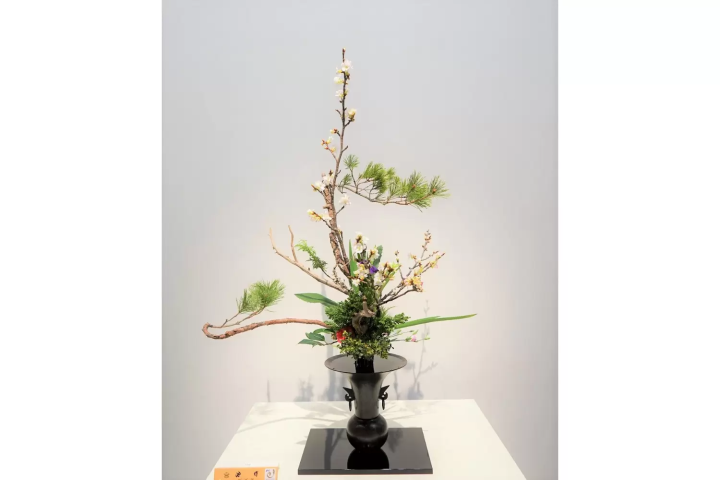
Rokkakudo Temple is also well known for being where ikebana, or the Japanese art of flower arranging, originated. The building right behind the temple is the headquarters of the Ikenobo School of Ikebana. As such, exhibitions of ikebana works are held here frequently. When visiting the temple, do take a look at the monuments dedicated to the art of flower arranging found on its grounds, as well as at the beautiful ikebana exhibitions.
Address: Kyoto, Nakagyo, Rokkaku Todoin Donomae
Website: http://www.ikenobo.jp/english/about/rokkakudo.html
↑ Return to the top of article.
2. Tenryuji Temple: Zen Temple with Dragon Painting

©JNTO
Built in 1339, Tenryuji is a Zen temple belonging to the Rinzai sect of Buddhism. Visitors to this temple often feel as though they are being watched - and they are! If you look up, you will see this incredible painting of a dragon gazing back at you.
Within the grounds of this temple, you will also find the Sogen Chiteien garden, which was created by the Zen priest Muso Soseki, and was designated as Japan’s first historic landmark and National Scenic Site. The temple is located in the beautiful Arashiyama area, right near the scenic bamboo grove.
Address: Kyoto, Ukyo, Sagatenryuji Susukinobabacho 68
Website: http://www.tenryuji.com/en/
↑ Return to the top of article.
3. Nonomiya Shrine: Matchmaking Shrine with Beautiful Moss Garden

Nonomiya Shrine is located right in the middle of the bamboo grove of Arashiyama. Originally built as a sacred purification space and residence for the Ise Shrine Priestess, it is well known to fans of Japanese literature for its black torii gate and brushwood fences, which are written about in the tenth chapter of "The Tale of Genji," the world's oldest extant novel.
Nonomiya Shrine is an excellent place to visit if you want to pray for luck in match-making, marriages, and childbirth. Do take a stroll through the beautiful moss garden behind the temple, a place with a sacred atmosphere.
Address: Kyoto, Ukyo, Sagano Miyamachi 1
Website: http://www.nonomiya.com/eng.html
↑ Return to the top of article.
4. Rurikoin Temple: Splendid Fall Foliage Spot with Teahouse
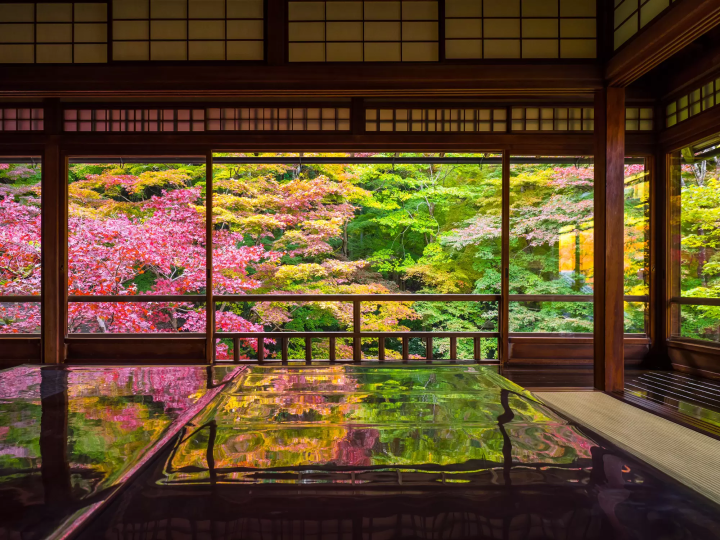
Picture by Pixta
Rurikoin Temple is a peaceful, historical temple and natural oasis hidden away in the Yase area of Kyoto. During the Jinshin Revolt in the year 672, Oama no Oji, who later became another legendary figure in Japan, Emperor Temmu, is said to have come to this area to heal his injuries in the Yase no Kamaburu (steam bath), which has served as the model for numerous steam baths and recuperation facilities both in Kyoto and across Japan ever since.
There are two incredible gardens and even a teahouse on the grounds of this temple. The garden is very popular in the early summer and the autumn, drawing photographers and visitors from all over the world to see the unique scenery of bright leaves and the temple.
Address: Kyoto, Sakyo, Higashiyama, Kamitakano 55
Website: http://rurikoin.komyoji.com/lp/en/
↑ Return to the top of article.
5. Seimei Shrine: See the Mystical Well and Ancient Cosmology Symbols

Photo by Pixta
The Seimei Shrine, founded in 1007, is a Shinto shrine dedicated to the legendary historical onmyoji (*1) Abe no Seimei (921-1005), and was first constructed on the former site of Seimei's home, and fully reconstructed in 1925.
There is a mystical well within the precincts said to have magical waters that were used by the legendary tea master Sen no Rikyu at one time, while throughout the shrine and grounds there are Seimei stars (pentacles), the symbol that Seimei is said to have invented in the 10th century in order to symbolize the five elements of Onmyodo practices.
Address: Kyoto, Kamigyo, Horikawa, Ichijo Agaru 806
Website: http://www.seimeijinja.jp/ (Japanese)
*1 Onmyoji: a practitioner of Onmyodo, a traditional Japanese esoteric cosmology that combined occultism and natural sciences, and took influences from Taoism, Buddhism, and Shintoism as well.
↑ Return to the top of article.
6. Eikando Temple: Famous for Rare Amidha Buddha Statue
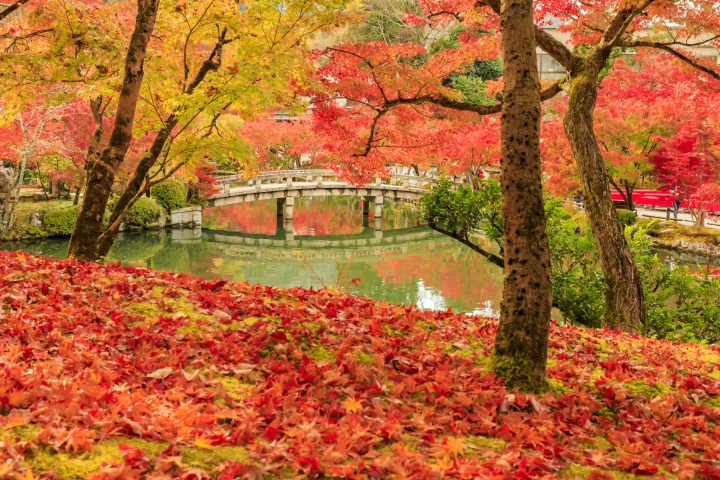
Picture by Pixta
Eikando was founded in 853 by Shinsho, a student of the famed Kukai, and is the head temple for the Seizan branch of the Pure Land sect of Buddhism. Mentioned in the historical poetry anthology the Kokin Wakashu, Eikando is best known for the Mikaeri Amida, a peculiar statue of the Amida Buddha who, rather than looking forward as is standard for all Buddist statues, is glancing over his shoulder back at the viewer instead.
Address: Kyoto, Sakyo, Eikando 48
Website: http://www.eikando.or.jp/English/index_eng.html
7. Kurama Temple: Meet Long-Nosed Goblins at a Mountain Temple

Picture by Pixta
Kurama Temple is a mountain temple in northern Kyoto that is the perfect spot for visitors wanting to enjoy Japanese beauty with a nature hike. In addition to the stunning mountain landscape and views, the temple itself boasts a long history and is full of highlights, such as the long-nosed tengu, Yuki Shrine, famous for its fire festival, and several national treasures.
The temple complexes and structures are connected via a mountain path that runs all the way to the popular Kifune Shrine area, so those wanting to visit Kifune too should be prepared for a moderate trek that will take about one hour. Natural outdoor onsen are near Kurama Temple as well.
Address: Kyoto, Sakyo, Kurama Honmachi 1074
↑ Return to the top of article.
8. Yogenin Temple: Feel Kyoto's History
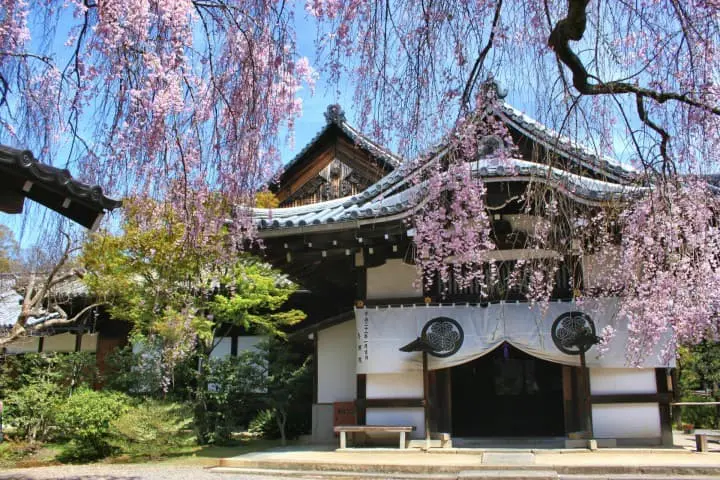
Yogenin is a small Buddhist temple originally built in 1594. It is most known for using wooden planks bloodied from the fall of Fushimi Castle in 1600. Visitors can see this by looking up when they walk down the halls inside the temple.
The bloodied ceilings are known as chitenjo in Japanese. There are four other temples in Kyoto that use these planks, but Yogenin is one of the easiest to get to. Looking up, you will be filled with fascination and perhaps slight apprehension imagining the battles of the past.
Address: Kyoto, Higashiyama, Sanju Sangendo Mawari 656
Website: https://ja.kyoto.travel/tourism/single02.php?category_id=7&tourism_id=477 (Japanese)
↑ Return to the top of article.
9. Kyoto Confectionery Museum: See Incredible Sugar Sculptures!
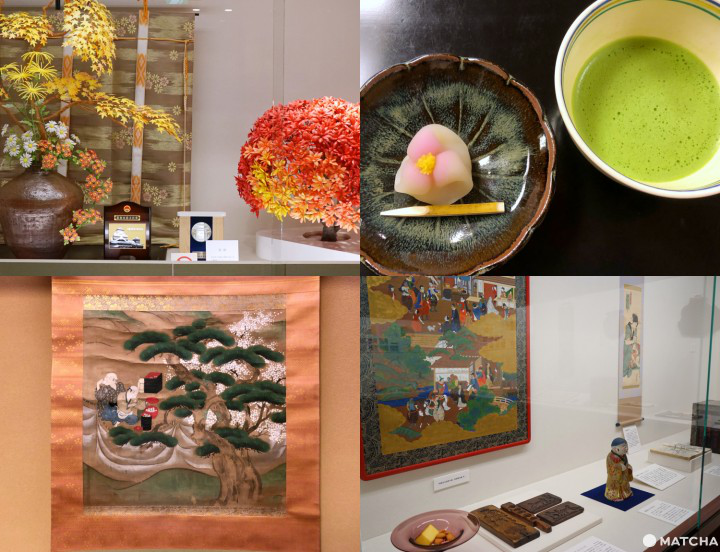
Picture from Kyoto Confectionery Museum - Learn And Taste Japan's Wagashi History
A must-visit for those with a sweet tooth is the Kyoto Confectionery Museum, a facility with free entrance, candy art, and matcha set service. Featuring wagashi (Japanese confectionery), this is a great place to learn about Kyoto's rich history with sweets making (imagine mochi, red bean paste, and dorayaki) and green tea.
Before leaving, be sure to drop into the souvenir shop to pick up high-quality Kyoto treats by Tawaraya Yoshitomi, a renowned local confectionery. The unryu, a red bean paste roll shaped to look like a dragon, is a unique and delicious choice.
↑ Return to the top of article.
10. Fukuda Art Museum in Arashiyama
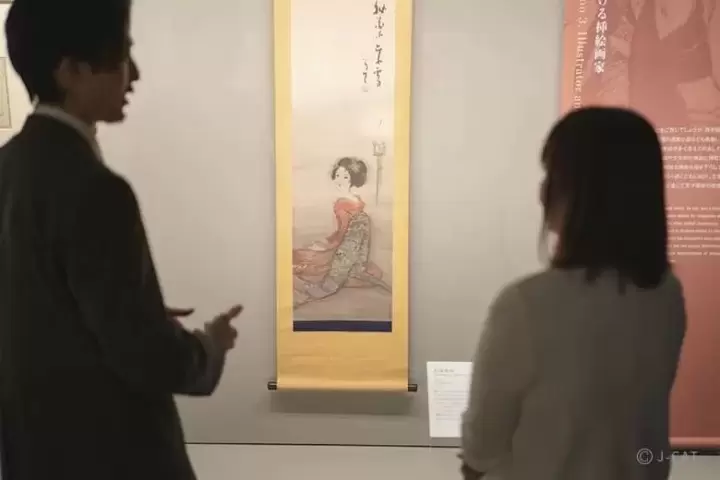
Picture courtesy of Wabunka
The Fukuda Art Museum, located in Arashiyama, showcases a collection of pre-modern and modern Japanese art. With approximately 2,000 works, it includes many rare pieces that are seldom displayed to the public.
Visit this museum to view works by renowned Japanese artists such as Ito Jakuchu and Yokoyama Taikan. It also houses one of the largest collections of works by Takehisa Yumeji, famous for his bijinga — portraits of beautiful women.
Hotels near Fukuda Art Museum Saga Arashiyama
11. Kahitsukan: Kyoto Museum of Contemporary Art in Gion

The Kahitsukan Kyoto Museum of Contemporary Art, situated in Gion, features modern and contemporary artworks from Japan and around the world.
The museum’s core collection highlights the works of notable Japanese artists such as Kagaku Murakami (1888–1939), known for his Japanese-style painting; Kaoru Yamaguchi (1907–1968), an oil painter; and Rosanjin Kitaoji (1883–1959), celebrated for his calligraphy, painting, and pottery.
On the fifth floor, visitors can enjoy a traditional tea ceremony room and the Sun Garden — a sunlit green space that fosters a meaningful connection between art and nature.
Kahitsukan Kyoto Museum of Contemporary Art
Address: Kyoto, Higashiyama Ward, Gionmachi Kitagawa 271 Map
Hours: 10:00 - 18:00 *closed on Mondays
Website: http://www.kahitsukan.or.jp/frame_e.html
12. Okochi Sanso Villa: Enjoy Panoramic Views of Kyoto
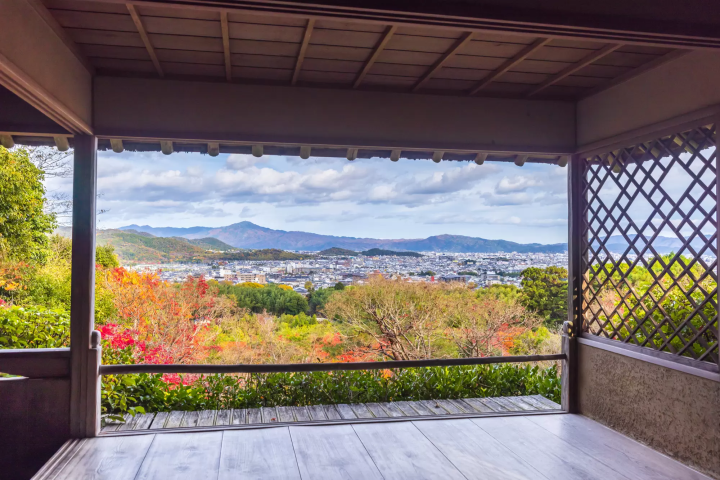
Photo by Pixta
Located in Arashiyama off the main bamboo forest path is Okochi Sanso Villa, a beautiful property where visitors can experience a traditional Japanese garden, teahouse, and views of Kyoto and the surrounding mountains. This villa is one of the former residences of Okochi Denjiro (1898 - 1962), a famous actor who often appeared in Japanese historical drama films in the early 20th century.
Numerous buildings and structures at the villa are nationally registered tangible cultural properties. The garden is gorgeous throughout the year with seasonal beauty so you can visit multiple times to see the change in scenery. At the teahouse, guests can sit down and enjoy a matcha tea with Japanese confectionery while admiring the beautiful landscape.
Address: Kyoto, Ukyo, Saga, Ogurayama, Tabuta 8
↑ Return to the top of article.
13. Kyoto Botanical Gardens: Exhibiting Japan's Rare Flora

Photo by Pixta
Kyoto Botanical Gardens is a lesser-known site in Kyoto, but is filled with much that travelers will enjoy. Visitors access to gorgeous flowers and greenery for an affordable price. Different flora blooms throughout the year, making it enjoyable to see at any time of the year. The grounds are especially spectacular in spring when cherry blossoms are in bloom. In the autumn, visitors can appreciate the colorful changing of the leaves.
Native Japanese plants grow here as well, and educational programs and special events are also held.
Address: Kyoto, Sakyo, Shimagamo Hangi
Website: http://www.pref.kyoto.jp/en/02-02-10.html
↑ Return to the top of the article.
14. The Lake Biwa Canal: Beautiful Cherry Blossom Spot

Photo by Pixta
The Lake Biwa Canal spans approximately 20 kilometers in total, connecting Kyoto city to the waters of Lake Biwa in the neighboring Shiga prefecture. Construction on the canal's first major section started in 1885 and was completed in 1890. The canal provided Kyoto with the water supply, hydroelectric power, and transport system for supplies it needed to continue flourishing.
Today, the waters are still used for the city, and visitors can take boat tours along the canal to learn about the history and importance of the canal and to enjoy the natural scenery surrounding the canal. There are maintained walking paths that follow the canal as well, ideal for those who want to take in the great outdoors of Kyoto via a nature hike––this area is a gorgeous cherry blossom spot in the springtime.
Website: https://biwakososui.city.kyoto.lg.jp/en/
↑ Return to the top of article.
15. Nishiki Market: Explore Kyoto's Kitchen
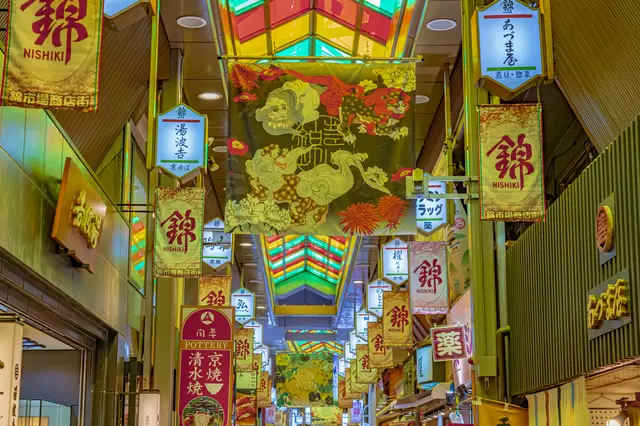
Photo by Pixta
Nishiki Market, or Nishiki Ichiba, is known to many as Kyoto's Kitchen. Many may still think of Kyoto as being a place for temples and shrines, but the Nishiki Market is the place to go to find authentic Kyoto cuisine. The market dates back several hundred years.
This spot has been growing in popularity in recent years but still retains its everyday charm. Shops selling everything from unique matcha sweets to savory snacks, to cooking ingredients, such as Kyoto seasonings, line this five-block-long shopping street. Be sure to stop by the little restaurants and food stands hidden off the main path for unique dishes and treats.
Address: Kyoto, Nakagyo, Nishiki Kouji Dori
Website: https://www.kyoto-nishiki.or.jp/en_lp/
Read also
↑ Return to the top of article.
16. SOU SOU Kyoto Store: Trendy Japanese Clothing

SOU SOU is a textile company from Kyoto that has gained international recognition for its combination of Japanese traditional clothing designs with modern Western fashions and one-of-a-kind, limited edition fabrics. In Kyoto there are several SOU SOU shops, each specializing in different wares, selling everything from everyday fashions to custom-made kimono, to colorful umbrellas, and fabric.
Address: Kyoto, Nakagyo, Nakano 583-6 (SOU SOU Kimono Shop)
Website: https://www.sousou.co.jp/?wovn=en
↑ Return to the top of article.
17. Kaboku Cafe: Taste Excellent Green Tea and Desserts

Picture from Face To Face With Japanese Tea At Kaboku Cafe In Kyoto
The Teramachi Nijodori area is especially known for its cultural history in Kyoto. There are many historical shops and buildings to see here, but the 300-year-old Ippodo Tea Shop and its related cafe and tea room Kaboku are two must-see places.
Address: Kyoto, Nakagyo, Teramachi Nijodori, Agaru
Website: https://global.ippodo-tea.co.jp/
↑ Return to the top of article.
18. Kameoka: Splendid Natural Scenery and River Boat Rides

Photo by Pixta
Located just past Arashiyama, Kameoka is a nature-filled destination with fewer visitors than typical Kyoto areas. In addition to the beautiful natural scenery, you can appreciate visiting many small temples and shrines here, like Shomyoji Temple, where you can see performances with taiko drums.
Another must-visit in Kameoka is the Hozu River, which stretches from Arayshiyama to Kameoka. Boat rides on the river offer great views of the surrounding mountains and forests. A number of hot springs, trails, and shopping streets are also in the area, making it a great place for a half-day adventure.
Read also
↑ Return to the top of article.
19. Mt. Hiei: Explore the Origins of Japanese Buddhism at Enryakuji Temple

Mt. Hiei is the ideal spot for those looking to get outdoors in Kyoto. Located in northeastern Kyoto, bordering Shiga prefecture, the mountain boasts the beautiful Enryakuji Temple, a designated UNESCO World Heritage Site. Visitors can explore the grounds and hike along the flower-lined trails; wildlife, like tanuki (raccoon dog) and monkeys, can also be encountered.
Cable cars go up the mountain as well, making it easy for all to enjoy the scenery. Hiking takes about two hours; the top rewards visitors with a spectacular view of the valleys below and Lake Biwa.
It takes around 30 to 40 minutes to get to the area from Kyoto Station. Visitors can expect more hikers in the fall months, but it is a relatively uncrowded area.
Address: Kyoto, Sakyo, Yamabana Ichoda, 14-1
Website: https://www.hieizan.gr.jp/design/pdf/en.pdf
↑ Return to the top of article.
20. Uji: Famous for Green Tea and the Byodoin Phoenix Hall

Photo by Pixta
Uji is a city located just south of Kyoto and is part of Kyoto prefecture. Famous for the beautiful and historic Byodoin Temple, the majestic Uji River, and tea, Uji is a highly recommended place to spend time on a day trip or longer when in Kyoto, especially for repeat visitors.
In addition to the famous Byodoin Temple, be sure to explore the other side of the Uji River, too, where you will find Uji Shrine and Ujigami Shrine, charming shops and cafes, and The Tale of Genji Museum. There are many vendors and cafes offering matcha and Japanese tea-infused desserts that will delight visitors with a sweet tooth.
↑ Return to the top of article.
Explore Deep Kyoto
While it's plenty of fun seeing all the famous spots in Kyoto, going somewhere that is less well known has its merits too, as you can make your own unique memories of Kyoto.
FAQ
What is the Hidden Street in Kyoto?
One of the hidden gems in Kyoto is Ninen-zaka Street. Ninen-zaka, also known as Sannen-zaka's quieter counterpart, is a narrow and charming pedestrian lane lined with traditional machiya (wooden townhouses), stone-paved streets, and historic storefronts. This street retains an old-world ambiance and offers a tranquil escape from the bustling crowds, providing visitors with a glimpse of Kyoto's picturesque past. Ninen-zaka is renowned for its well-preserved architecture, subtle beauty, and traditional atmosphere, making it a delightful hidden street to explore in Kyoto.
Where do the locals go in Kyoto?
Kyoto locals gravitate towards cultural hotspots like Nishiki Market for fresh produce, neighborhood cafés for a taste of local cuisine, and serene parks including Maruyama Park and the Philosopher's Path for relaxation. They frequent community temples and shrines for spiritual solace, engage in traditional craft workshops and art studios, and partake in local events and festivals reflecting Kyoto's rich heritage. Seeking out hidden gems and quieter spots allows residents to savor the city's authentic charm beyond its tourist attractions, fostering a deeper connection to Kyoto's cultural tapestry and traditions.
What is the most charming street in Kyoto?
One of the most charming streets in Kyoto is Sannen-zaka, known for its traditional atmosphere and well-preserved historic buildings. Located in the Higashiyama District, Sannen-zaka is a pedestrian walkway lined with traditional machiya (townhouses), shops selling local crafts and souvenirs, tea houses, and charming cafes. The street leads to the iconic Kiyomizu-dera Temple, making it a popular route for both locals and visitors exploring Kyoto's cultural heritage. The preserved architectural style and nostalgic ambiance of Sannen-zaka offer a glimpse into the traditional Kyoto of yesteryears, making it a favorite destination for those seeking a quintessential Japanese experience.
What is the hippest neighborhood in Kyoto?
Kyoto has several vibrant neighborhoods that cater to different tastes and preferences, offering a mix of trendy cafes, boutiques, cultural attractions, and modern amenities. One of the hippest neighborhoods in Kyoto is Gion-Shijo, known for its unique blend of traditional charm and contemporary urban vibes. Here, you can find stylish cafes, chic restaurants, modern galleries, and fashionable boutiques alongside historic tea houses, traditional machiya houses, and iconic Gion district attractions. Gion-Shijo's dynamic atmosphere, fusion of past and present, and trendy establishments make it a popular choice for those seeking a mix of modern culture and traditional Kyoto charm.
How many days do you need in Kyoto?
The ideal number of days to spend in Kyoto can vary based on your interests and the depth of exploration you desire. However, to experience Kyoto's highlights and immerse yourself in its rich culture, history, and beauty, a minimum of three to four days is often recommended.
Read also
Main image by Pixta
This is an updated version of an article published originally in 2017.
This is the official account of MATCHA's English editorial team. We are bringing you the latest travel information on Japan.








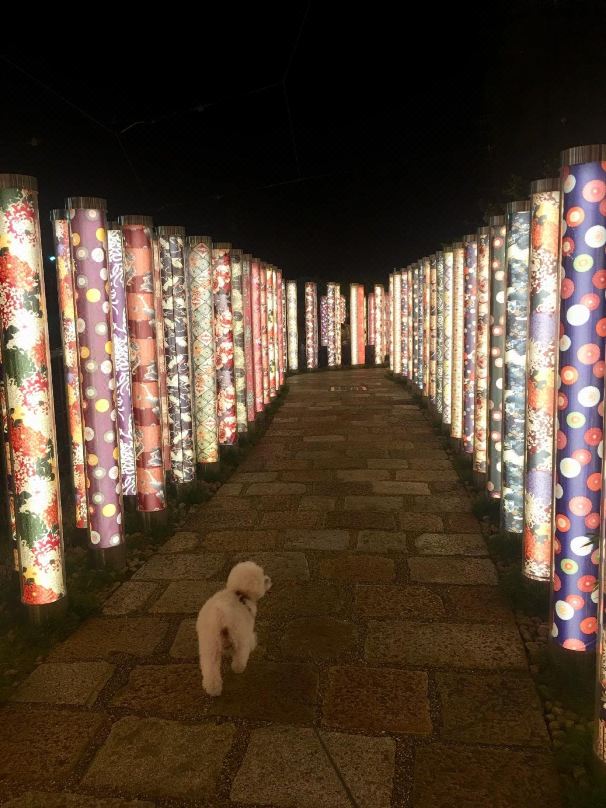


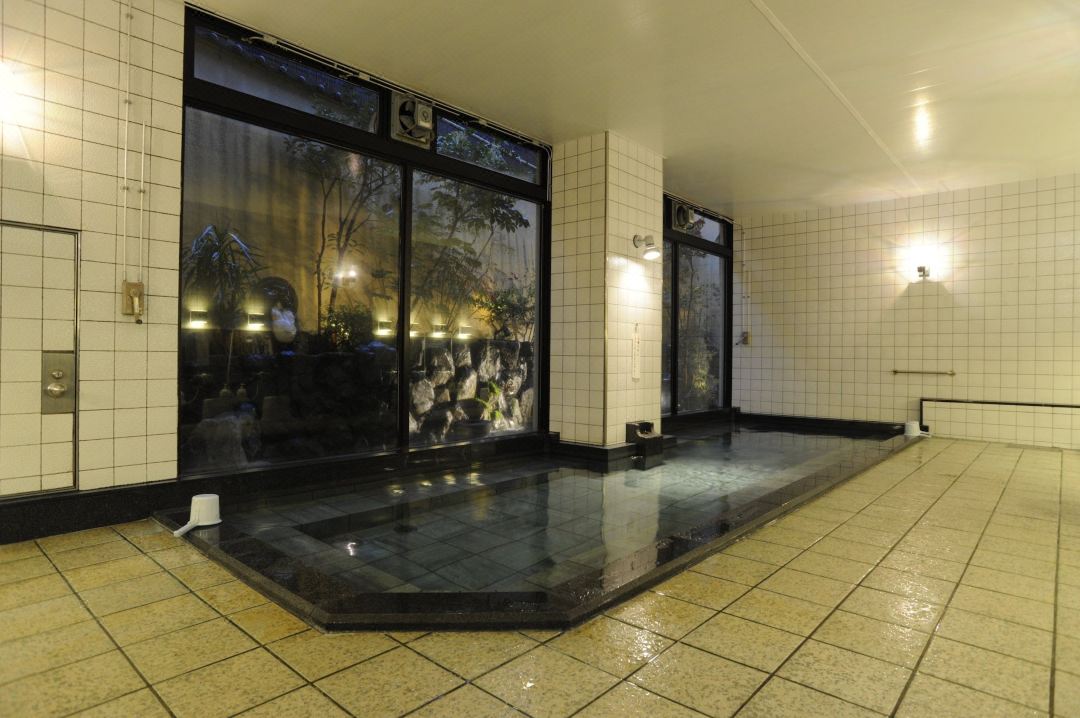

















































![[Coupon Available] Attention Overseas Winter Sports Fans! Nagano's Sports Depot Has Evolved](https://resources.matcha-jp.com/resize/720x2000/2026/01/05-254819.webp)
![[2 hours from Tokyo ] 10 Quiet and Breathtaking Views of Mount Fuji in Yamanashi Hokuto City , Yamanashi - Part 2](https://resources.matcha-jp.com/resize/720x2000/2025/12/16-253037.webp)

![[Reopening in March 2026] Ikoma Sanjo Amusement Park Park, 45 minutes from Osaka , with free admission](https://resources.matcha-jp.com/resize/720x2000/2024/08/28-194409.webp)